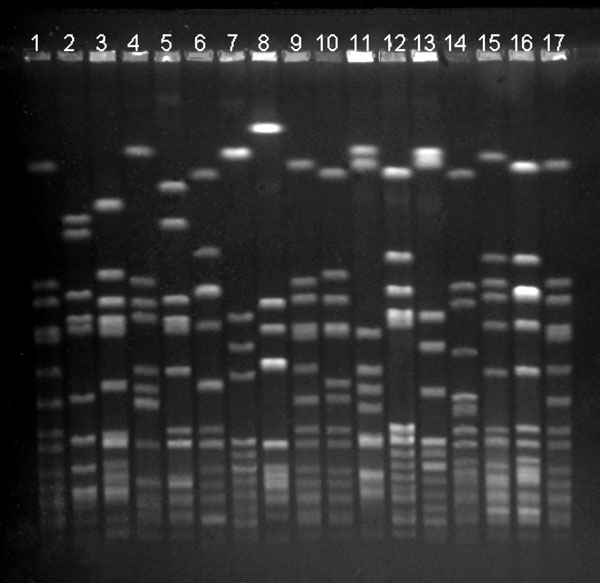Volume 8, Number 6—June 2002
Research
Community-Acquired Methicillin-Resistant Staphylococcus aureus, Finland
Figure

Figure. Pulsed-field gel electrophoresis (PFGE) profiles of the 14 most common methicillin-resistant Staphylococcus aureus (MRSA) strain types identified, Finland, 1997–1999. Lanes 1, 9, 17: S. aureus NCTC 8325 (molecular weight marker); lanes 2–4: strain types associated with community acquisition (Mikkeli clone, E22, E31); lane 5: E1; lane 6: E24; lane 7: E5; lane 8: Kemi clone; lane 10: E27; lane 11: UK EMRSA-15; lane 12: E19; lane 13: Pori clone; lane 14: E20; lane 15: Iberian clone; and lane 16: O25.
Page created: July 16, 2010
Page updated: July 16, 2010
Page reviewed: July 16, 2010
The conclusions, findings, and opinions expressed by authors contributing to this journal do not necessarily reflect the official position of the U.S. Department of Health and Human Services, the Public Health Service, the Centers for Disease Control and Prevention, or the authors' affiliated institutions. Use of trade names is for identification only and does not imply endorsement by any of the groups named above.